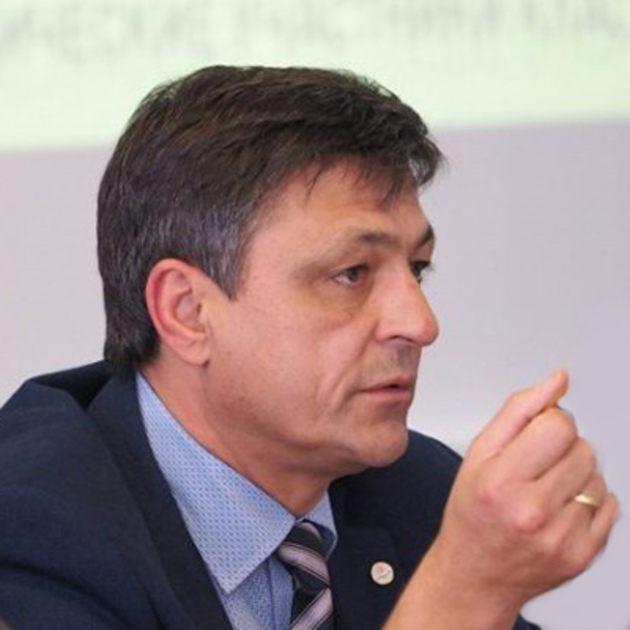Today, the number of registered cases of coronavirus infection of the strain Covid-19 in Russia has exceeded 100 thousand - currently 106498 cases are known. Also, another bar was overcome today - 1,073 deaths, while Russia among the countries most affected by the pandemic was the only one with a low mortality rate of 1%. Vestnik Kavkaza talked with the adviser to the head of the Federal Medical and Biological Agency Veronika Skvortsova on sports medicine Peter Lidov about the April statistics on the distribution of coronavirus in the Russian Federation.
- Petr Igorevich, the first question will be, which, probably, interests many of our readers: was self-isolation an effective measure in the fight against coronavirus? March 31 in Russia it was known about 2337 cases, and today, a month later - more than 100 thousand. What do these data indicate - the success or failure of restrictive measures?
- If we assume that this virus has not yet been familiar to humanity, it means that the immune system is not adapted to it and our task is to get as many people as possible ill, but with the least lethality. What was the tragedy of Italy, Spain and Europe as a whole? When a lot of people fell ill immediately, not everyone had enough places for treatment, and the high mortality rate was connected with the fact that they could not provide medical care to all those in need. Therefore, the regime of self-isolation of the population was brought to life precisely by the need to prepare for a prolonged infection and to prevent the simultaneous infection of a large number of citizens. Otherwise, we would have a medical collapse with which we could not do anything.
- Thus, the current figures for the increase in the number of registered cases of 5-6 thousand per day (today 7 thousand) - is this evidence of the effectiveness of self-isolation?
- Of course. This figure of the increase in the number of patients is normal and logical, it reports that the infection was able to stretch over time. It is very important that now the percentage of patients who have a mild illness is much higher (I think this is due to mutations of the coronavirus). In general, today the intelligence of Russia has fulfilled the first task of preventing instant mass infection and medical collapse.
- Why, in your opinion, did we outrun the densely populated China in terms of the number of cases?
- The fact that we overtook China is connected with less stringent isolation measures in our country in comparison with the Chinese. Let me remind you that Hubei Province was completely isolated, cut off from other Chinese territories. We do not have this, transport links between the regions have remained, the milder Russian regime has left the possibility of communication between people. In addition, in Russia, citizens do not have the same self-awareness everywhere, and someone abided in April more and others less. They did not introduce a strict binding to the house, a number of citizens took the recommendations of the authorities frivolously, hence the continued increase in the number of cases.
At the same time, I would like to draw attention to the fact that we are increasing the number of sick doctors, and not only those who are struggling with Covid-19, but in a regular medical network. Merchants, including grocery stores and pharmacies, also get sick. But these are people who ensure the vital activity of the country and the population - they are now at risk in terms of infection.
- How did Russia manage to achieve such a low mortality rate of 1%?
There are a number of reasons. First of all, this figure is due to the fact that we have established fairly effective medical care. We can provide the necessary assistance to almost all patients, and we use the experience that China and Europe have given us. Thanks to this, the period of growth of the incidence rate is so prolonged for us. The accumulated experience, in particular, made it possible not to put all the sick in hospitals, to treat mild cases in quarantine at home, and to be hospitalized for substantial vital indications.
The low percentage is also related to how we take into account deaths of those infected with coronavirus. In some cases, deaths can occur not from pneumonia itself, but, say, from myocardial infarction or thromboembolism, because there is a lesion inside the vessels, which is associated with a change in blood viscosity and increased thrombosis. Hypothetically, it can be assumed that such victims can be classified as persons who died for other reasons.
- Are there any medical disadvantages of the self-isolation regime?
- Since the infection was artificially extended over time, the usual pandemic periods that are traditional for many influenza-related systems can be expanded. The fact is that a certain critical mass of people is needed for recession, which must be ill: after this, the infection begins to go away, as some were unreceptive, others were ill and gained immunity, so the infection chain breaks off and the virus as such continues to continue to exist at a minimum.
What, then, does artificial isolation mean? When the restrictive measures are weakened, people who did not come into contact with the virus in principle, because they were sitting at home, will flood into enterprises and other places of mass congestion. This means that a new outbreak is quite real, it should be expected. It was not for nothing that forecasts were voiced that we would overcome the disease somewhere by June 15, and now they are already talking - by July 7. That is why now mobile hospitals are being deployed at such a speed - Russia is preparing for the worst case scenario and is showing the whole world the true face of philanthropy.
At the same time, it’s very important to emphasize: the time obtained by self-isolation still plays into our hands: we are actively studying the effectiveness of drugs, (the drugs used in malaria have already shown their effect and are recommended), at high speeds, sera against Covid-19 are being studied , which will be introduced and develop immunity in humans in order to prevent re-infection. Genetics, in turn, are working on the question of how an individual genetic code is susceptible to the virus and how to identify the group at greatest risk in order to isolate it.
















